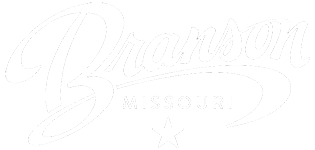Tri-Lakes Community Theatre Article By Jean Cantwell
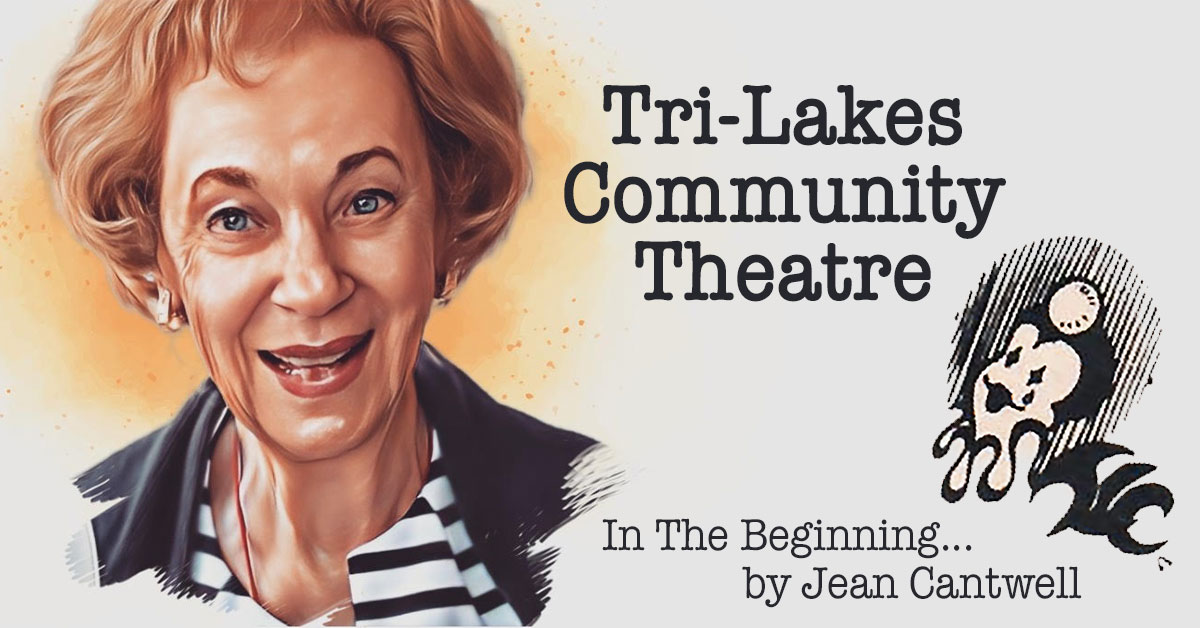
The Branson Regional Arts Council has been serving the community since 1965. It was originally founded as the Taney Arts Council by Jean Cantwell and a group of arts minded community members. Jean remained an active member of the organization until her unexpected passing at the age of 92, on March 20, 2018.
Thirty nine years ago, in 1983, Jean was also inspired to bring community theatre to the Ozarks, and with the assistance of a group of friends, Tri-Lakes Community Theatre (also known as T.L.C.) was created. In January 2018, with Jean’s approval and guidance, T.L.C. officially merged into The Branson Arts Council, Inc., allowing the Arts Council to preserve the rich history of theatre in the Ozarks, and build upon the tradition of live community Theatre at the Historic Owen Theatre (built in 1936) in downtown Branson.
In January 1990, Jean Cantwell wrote the following article about the inspiration and creation of Tri-Lakes Community Theatre. Shortly before her passing, Jean gave a copy of this article to BRAC Executive Jim Barber with her permission to publish it online. We are honored to share her original text of this letter…
TRI LAKES COMMUNITY THEATRE – In The Beginning
by Jean Cantwell
January 1990
Sometimes I think I should shower three times a day, not from an odorous necessity, but the shower seems to be a source location for inspiration.
It’s always a rush to shower and dress before going to the American Association of University Women meeting, or any other meeting, but on Monday, the 1st of October, 1983, I stopped the usual routine of trying to do “just one more thing” to make a relaxing preparation.
I thought about all the new people who had moved to town, many of them very well educated, new professors at the School of the Ozarks and their spouses. New music theatres were being constructed each season, and musicians were coming into Branson by the score. Cosmopolitan retirees who were accustomed to hearing and seeing plays and concerts were my neighbors, and as I regulated the hot and cold water, I suddenly realized the time was ripe for a little theatre program.
Two or three bright ideas shot into my mind for how to organize a theatre group, and a sense of impracticality soon shot them out, but it quickly became evident to me that the perfect place to start a theatre was out of the American Association of University Women. These were people who would enjoy theatre and see the value of having a local group.
As quickly as decency would permit, ideas went down on paper to set up a step by step progression for funding, involving many more people and launching the program. If the A.A.U.W. would permit a new theatre group to operate under their umbrella until a not-for-profit charter could be obtained from the State of Missouri, and if the A.A.U.W. would designate funds for initial operations, plans could be set up to form a Board and start a fund raising program for the first show.
There was no opportunity to take the request to the Board of A.A.U.W. With the excitement of the idea, time escaped, and I arrived at the home of Sherri Millsap as the president called the meeting to order.
At the appropriate time in the New Business section of the meeting, I presented the preliminary plan for starting a theatre. Elnora Sprague was the president. She and the members were receptive. Elnora requested me to do a study and present a plan at the November meeting. She said it was too big a job for one person, and she asked for volunteers to serve on the committee with me. Immediately, Sherri Millsap volunteered. She was joined by Hannah Wolf, Denise Stephens and Carlene Davis. After the A.A.U.N., we scheduled a meeting at my house the following day.
We met two or three times in the next week and talked almost every day. We understood that we had been asked for a feasibility study, but we all agreed that elements for success were in place. We began to plan for a performance in the spring, but we also worked to form an organization that could sustain itself season after season. Each of us started researching other theatre companies. I had lunch with Mike Denniston and Louis Schaefer of the Springfield Little Theatre. Each of us made recommendations stemming from our own experiences.
All five of us would be co-producers of the show. It was evident the success of the first show was necessary to permit a repeat or any sign of permanency. A good director was imperative.
There were local people who were experienced and very good at directing. We could have gone to an established group such as the Theatre Department at the School of the Ozarks or to the Entertainment Department at Silver Dollar City, but we felt if we went to either or any other school department, or music theatre, we would automatically exclude the participation of all the others. Down the road, we would need the cooperation of all the local, artistic people. We needed an outside director who could weld together people from all the groups.
Dr. Robert Gilmore was Vice President at Southwest Missouri State University, and he had also been head of the Theatre Department at S.M.S.U. We decided he would be our best source for guidance.
On the way to Springfield, we decided to select officers among ourselves. Prior to that time, our meetings had been an exchange of ideas with popular agreement on goals. They were set… a show in the Spring and a permanent organization.
Perhaps it was because I was driving the car when we drove together to Springfield. Whatever the reason, I, Jean Cantwell, was selected as president. Hannah couldn’t be secretary, because she got car sick trying to write in a moving automobile. Denise Stephens became secretary. Sherri Millsap had a computer. Automatically, she became treasurer. Carlene Davis was vice president, probably because of where she sat in the car, and Hannah was second vice president. Because she had a few tech courses in college, she also was the costumer and technical advisor.
No matter what Dr. Gilmore had to say, or anyone else for that matter, we decided to proceed with having a play in the spring. We thought he would encourage us, and he did. He drew out a chart of necessary elements in a theatre program on the black board He gave us guidelines on how to proceed, much as he would have done in a class room. Most important of all, when we asked about potential directors in our area, he suggested we call his son-in-law, Terry Bloodworth who lived in the Kimberling City area. His credentials sounded perfect to us. Knowing Terry’s busy schedule, Dr. Gilmore was doubtful that he would accept.
With our inexperience, no funds, no theatre and no scenery, it took a big “sell” job to convince Terry he should be our first director, but once he was convinced, he, too, became like a teacher to us. He told us about his experience with two different community theatres in the South. The word, community, was the key word and concept. We stress it still. It has been important in drawing in all the theatre related organizations in the area. Without the cooperation of each, success would have been impossible.
In the shower again, the name came to me, the Tri Lakes Community Theatre, or T.L.C. Theatre. If Tender Loving Care comes to mind before Tri Lakes Community Theatre, the association of concern and camaraderie is all to the good.
We asked Terry to submit two or three plays he would be interested in directing. Woody Allen’s Play It Again Sam was selected, and we set the dates for March 8, 9, 10, 1984.
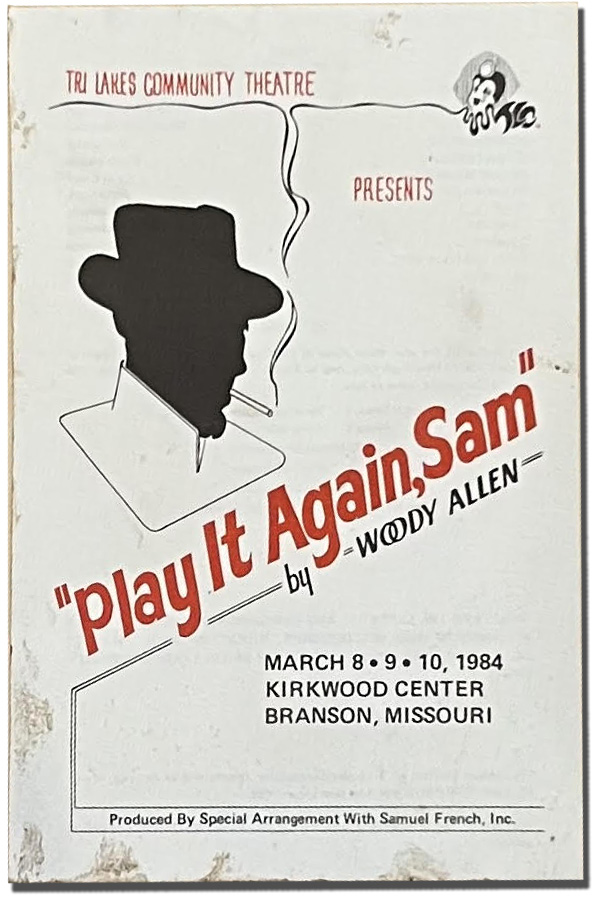 To give our letters credibility, we needed letter heads and a logo. Before we could ask, Helen Long volunteered and submitted samples for a logo. We selected two which are still in use.
To give our letters credibility, we needed letter heads and a logo. Before we could ask, Helen Long volunteered and submitted samples for a logo. We selected two which are still in use.
When we were only a few weeks into our planning, I ran into my 6 foot 4 inch partner playing tennis, bounced off him onto the court and broke my right wrist. Being unable to do the simple, household duties, it gave me a great deal more time to work for T.L.C. Telephone calls and calls on patrons can be done as easily with a broken wrist as a healthy one.
It is no surprise that five women, all of whom have children, would include an educational program in establishing a theatre group. The first idea was to have a children’s play every other year. It was an ongoing discussion to determine whether a children’s play is one performed by adults for an audience of children or a play performed by children. That was the only issue on which we did not come to a decision.
Education for children was not the only area of self improvement we wanted to foster. We provided for Readers Theatre. A group would meet monthly or quarterly to read plays aloud together. From their interest, we would gain an audience for the season, satisfy the desire to be a star without stage fright, and have recommendations for plays to select for performance.
At the November meeting of the American Association of University Women, in place of a feasibility report, I made the report for our committee. It included a complete plan for starting the Tri-Lakes Community Theatre, a play, a date and a director. I asked A. A. U. W. to designate $500 from the treasury and permit T. L. C. to raise funds to place in the A. A. U. W. bank account for the theatre use until we could become a not-for-profit organization on our own. Mrs. Sprague asked for clarification from the National Bylaws Chairman. She said, “It would be a great community project for the Branson Branch to sponsor. It certainly does fall within the scope of A,A,U.W.’s policy. It fits beautifully under the area Cultural interests.” At the December meeting, the motion was unanimously voted upon favorably, and we were ready to begin operations. The Branch also offered to sponsor the Premier Party on opening night.
Fundraising fell to me. At a party, there was a good opportunity to ask Smith Brookhart to make a donation to T. L. C. from the Centerre Bank. He matched the A. A. U. W. donation. Additional donations from the Branson Arts Council and the Security Bank and Trust Company of Branson made it possible for us to fund the first show.
On December 6th, there was a public meeting in the Community Room of the Branson City Hall to announce information about the new theatre group and to sign up actors and tech people. A large group of theatre people attended.
One of the actors, Bob Barnard said, ” When I got a job here, that put food in my stomach, but this project will put the apples in my cheeks.” He won the lead role in Play It Again Sam. Cast members were: Kayla Beatty, Monty Ray Davidson, Martha Steward Wright, Ken Carter, Karin Lloyd, Kim Novak, Sherri Cannedy, Bonnie Arnold, Gail Elmgren, Marla Hragyil and Kathy Diehl. These people represented town people from Branson, Forsyth and Reeds Spring; actors from Silver Dollar City and the Shepherd of the Hills Farm, music show singers and students from the School of the Ozarks.
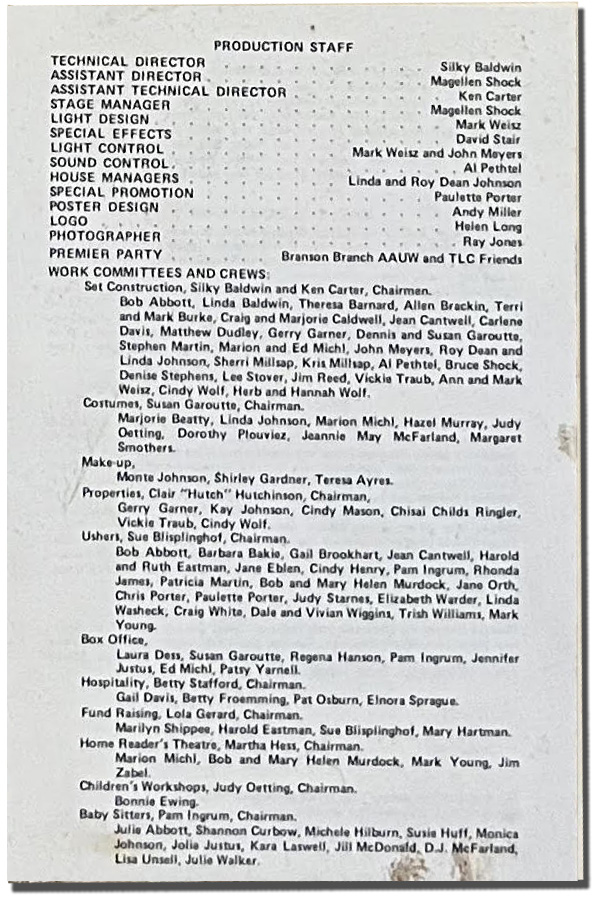 The Board was fortunate to have the use of the theatre at the Kirkwood Center. Jeff Newkirk and Pat Shue were both very cooperative in helping us. Opening night had the atmosphere of an “uptown night out”.
The Board was fortunate to have the use of the theatre at the Kirkwood Center. Jeff Newkirk and Pat Shue were both very cooperative in helping us. Opening night had the atmosphere of an “uptown night out”.
We went into the Kirkwood only a few days before opening and worked into the night setting up the scenery, setting lights and rehearsing.
We held rehearsals in the American Legion Building in the room that had been the Branson Library. Set construction was done in the south room on the same level. Although it wasn’t warm, it was comfortable and spacious. How we have longed for those accommodations now that none of them are available.
The time came that Buddy Green and his music show went into the Kirkwood. His sophisticated, lighted set and permanent risers prevented our moving in for the Winter Stock season, and the city of Branson tore down the old City Hall, American Legion Building, but that was to come later in the story. Those times in the first two years were loads of fun but always cold. For instance, neither the owners of Kirkwood nor we knew there was no heating element in the heating system at Kirkwood. The construction people had simply neglected to put it in the housing on top of the theatre. Since Branson did not have a Christmas Celebration at that time, there had been no need for heat. On opening night, we froze. I kept turning up the thermostat. It would click and seem to respond, but it only blew more cold air with greater force. We borrowed heaters for the lobby, but it was miserable. The actors were stiff with the cold.
A January 1, 1984 story from the News-Leader states that Bloodworth “has a master’s degree in speech and theater from Southwest Missouri State University… He has directed Corn Crib Theatre in Branson and the Springfield Little Theater‘s production Night Must Fall”.
The News-Leader story continued, “Our long-range goal in establishing TLC Theatre is to bring participation in live theater to the people of the Tri-Lakes area, whether that participation is actively on the stage or in the audience, increasing their cultural enjoyment. We expect plays to be in the non-tourist season, a two or three play season,” said Mrs. Cantwell, who is the group’s organizational president. She said the board hopes TLC also will form a youth group, which would do the season’s third play.
Terry brought in friends from Silver Dollar City who had also been classmates at Southwest Missouri State University. Silky Baldwin headed the tech department. Silky speaks three languages: English, French and Hillbilly. When he told me, “You cain’t do nothin’ I cain’t fix,” I was encouraged to continue trying to paint wallpaper scenery, a task for which I had neither skill nor training. He taught all of us to glue and paint, how to “Dutchman”, or maybe that isn’t a verb. Only a theatre person would know. He never once told us how bad we were at building scenery until he had taught us how to do it better. We built everything from scratch.
Ken Carter was the co-chairman of set construction, and he still works most of the shows, either on stage or in the crew.
Susan Garoutte was costume chairman. Hutch Hutchinson chaired the properties committee. Sue Bisplinghof began a career as chairman of the ushers. We even had a chairman of baby sitters, and that was one of the most important responsibilities for the Barnards, Baldwins and many more. There were 8 or 10 kids to care for on any given night. Pam Ingrum was the chairman.
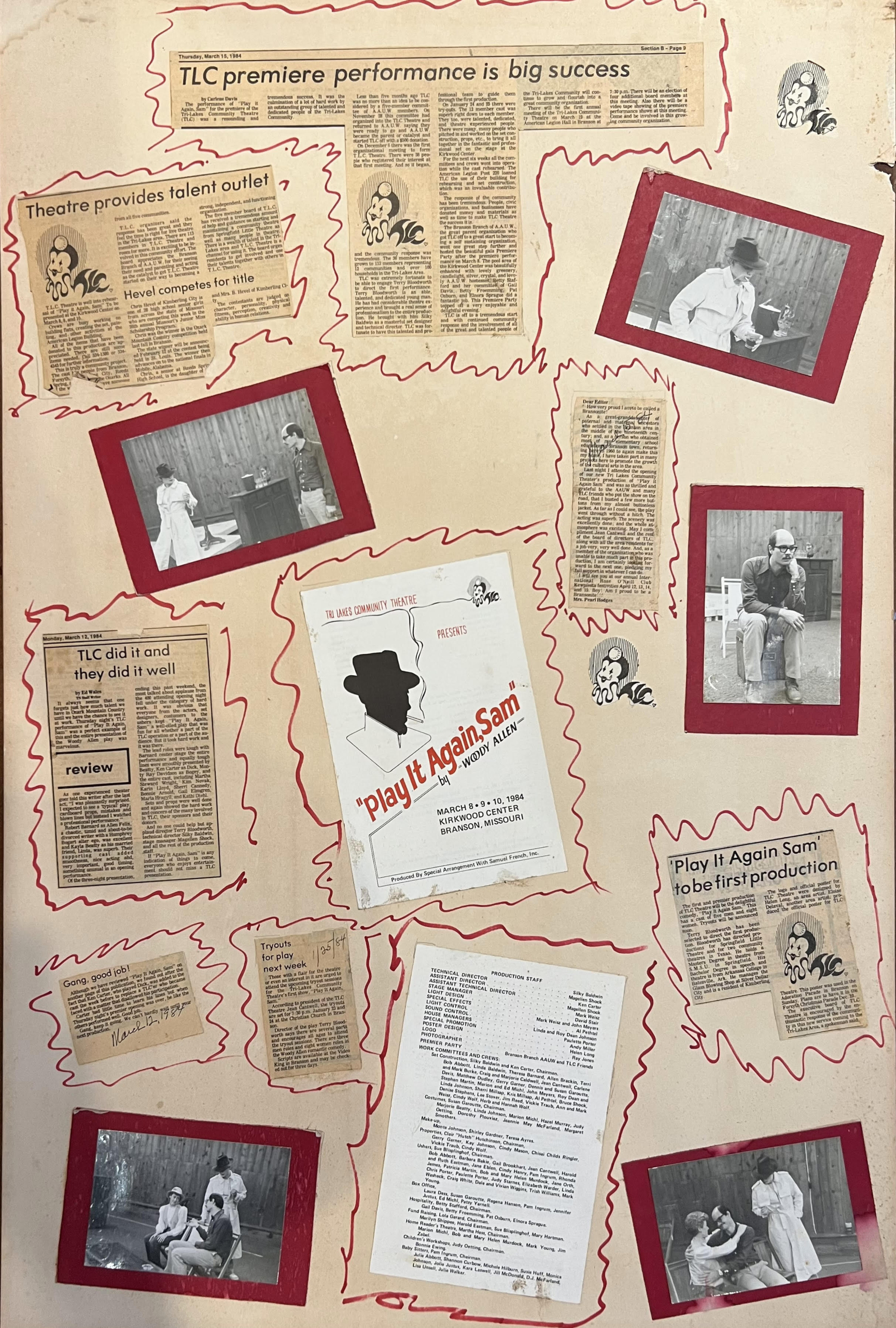
Donations of materials and money from Branson businessmen were overwhelming and gratefully received. Hannah, Sherri and Carlene became adept at begging everything from a paint brush to lumber.
Andy Miller did the art work for the poster. T.L.C. still owns the original art work, a treasure to keep.
The headline reviews read, “Play Proves Big Success”, “TLC Did It and They Did It Well”, “TLC Premiere Performance Is Big Success”, “Play It Again, Sam‘ Debut Near Flawless”.
Mayor James Martin was quoted, “There was no doubt the talent is here. Branson is ready and yearning for this type of entertainment.”
Ed Wales said, “The play was marvelous. Since it was the premiere production of the play and TLC theatre organization, it was a surprise to see how professionally it was done. It once again proves how many talented people there are in Ozark Mountain Country.”
Betty Strafford organized the beautiful reception around the indoor swimming pool at the Kirkwood Center.
The first newsletter was published February 1984. Jean wrote it, but Sherri ran it through the computer and Xerox machine of Caravel Studios. The T.L.C. Newsletter stated the purpose, announced work dates to the 115 members and had topics headlined “Children’s Workshop”, “Home Readers Theatre” and “Patrons”.
Judy Oetting had agreed to run a summer workshop for children. A meeting of a Home Readers Theatre was to be announced in the newspaper, and a drive to find individual patrons was under way.
Vol I, No.2 of T.L.C. Newsletter also was dated February 1984. It urged members to sell tickets.” Baby sitting services were necessary for the actors and tech people. The newsletter set dates and time. The premier party, around the indoor pool at the Kirkwood Center was called the Big Splash.
The Board met regularly every Wednesday, and each member spent many hours on T.L.C. business throughout the week. A Constitution was developed. Application was made to the Secretary of State of Missouri for non-profit organization status.
Each member worked in some capacity as a producer.
Carlene handled most of the publicity. Sherri ordered scenery materials. She, Hannah and Denise made trips to the lumber yards, hardware stores and any place they could find materials and props. Everyone worked at whichever job needed to be done.
According to the Constitution, the Board would consist of nine members elected at the Annual meeting. The Annual meeting is to be scheduled within 30 days following the spring show and be announced in the program of that show.
The By-laws set out the terms of office for a nine member Board. New members were: Robert Barnard, Clair (Hutch) Hutchinson, Marion Michl and Mark Weisz. The Standing Rules set out the plan to establish the rotation for the original Board members. The original members had already drawn straws to determine of which of us would have the three year term, the two and the one. At a later date, an adjustment of terms was changed when Carlene Davis and her husband took a sabatical. Denise Stephens and her husband moved back to Houston.
Newsletter Vol. II, No. 1 announced a fund raising auction party on the lawn at Millsap’s house on September 22nd. It was a great plan, but it rained and the party was moved to the theatre in the Missouri Conservation Building at Table Rock Dam.
The T.L.C. Children’s Theatre was a huge success.
We were awarded funds from the Missouri Arts Council C.A.P.S. program through the Branson Arts Council. The Play Readers Group met on the second Monday of each month at the American Legion Hall.
The season plays and dates were announced in the T.L.C. Newsletter. Arsenic and Old Lace was scheduled for December 6, 7 and 8 with Marion Michl as director and Mark Weisz as production manager. Terry Brown appeared to grow in the waist line during rehearsals, but it was several months later when her baby was born. Dorothy Douglas Yager and Kitty Snow played the lovable Aunts to David Houseman. Ray Jones and Curt Harris scared us, but we laughed at them as they dealt with Monty Ray Davidson or Teddy Roosevelt. Ken Carter was technical director and set designer. John Meyer did the lighting, Teresa Ayers the costumes. Gail Davis did her first of many receptions. Gerry Garner and Rikky Merrell were properties and make-up chairmen. Please see the program for all the wonderful cast and crew.
Sarah Klinefelter was the director for Once Upon A Mattress in the spring. Sarah promised that the costumes would be beautiful, and they were. At Sarah’s direction, they were made especially for us. Each couple was color coordinated. Blue symbolized the leading lovers, Kate Birdenir and Mark Virkler. Dawn Nicely and David Sloat were the less-than-innocent white lovers. The older Marla Hragyil and Bill Townsend as King and Queen wore sophisticated red. Black Gary Mulkey, red Ken Carter and brown Danny Eakin were the Wizard, Jester and Minstrel. Fred was full of energy, and we had three big hits under our belts. It was fun for me to play in the pit under the direction of Dennis Wolff.
The first quorum meeting of the TLC-OWL One Act, Play Competition Executive Committee met at the home of Jean Cantwell April 24, 1984 at 3:30 P.M. Artie Ayers, Sarah Klinefelter, Stephen Martin, Kayla Beatty and Jean Cantwell were present. Jory Sherman was unable to attend. The minutes show, “Jean Cantwell presented a summary of position papers which resulted from discussions among people interested in starting the competition.”
OWL is the Ozark Writers League. They had responded to co-sponsoring a play writing competition. There was a joint committee to judge manuscripts. The deadline for receiving the scripts was June 1st, 1985. T.L.C.Theatre would perform the winning plays. The winner would receive a $200.00 prize supplied from the Branson Arts Council through Missouri Arts Council funds. Marion Michl was the coordinator for the competition.
Carlene Davis and Denise Stephens went off the board, and Dr. Robert Gilmore and Dr. Fred Pfister were elected at the Annual meeting. Jean Cantwell and Sherri Millsap remained in office as president and treasurer. Mark Weisz was elected vice-president and Hannah Wolf as secretary. Marion Michl, Hutch Hutchinson and Bob Barnard remained as Board members.
Standing committee chairmen were:
Fund Raising, Harold Eastman
Publicity and Promotion, Richard Carr
Social and Hospitality, Anne Cox
House Manager, Laura Dees
Technical Manager, Silky Baldwin
Wardrobe, Teresa Ayers
Home Readers, Martha Hess
Historian, Hutch Hutchinson
Youth Program, Judy Oetting
Bonnie Ewing joined Judy Oetting in working with Mike Kiewitt and Roberta Mohling of the Branson Parks and Recreation Department in the summer drama workshops.
Events that worked quickly became precedents. In addition to an annual fundraising party, an in-house party is held each Fall to kick off the new season. It isn’t exclusive to in-house. Everyone is invited who wants to participate in T.L.C. in any way. We are looking for new members, new talent. Jennifer Justus and Hannah Wolf headed the T.L.C. Roundup Celebration Party September 28, 1985. We were trying to recruit all kinds of talent, including baby sitters.
In the beginning, because. there are so many music theatres in Branson, it appeared there would be no problem finding a location for community theatre performances in the winter season when no tourists were present. Many theatres were eliminated, because they were too large for intimate theatre. It was a shock to discover many did not have any heating system. It was not much of a surprise after that to learn that water systems were drained and everything was shut off and closed down in the off season. To open them and winterize again was expensive, but the greatest expense came from the fact that the utility bill charge came in at the peak summer rate if electricity were used only one day in a month. We could not afford such bills, and even the generous theatre owners who would let us use their facility couldn’t afford us either.
When Buddy Green built a set with multi lights in the flats and risers, the back looked like a wire jungle. There was no place for us in that Inn.
After hours of chasing and negotiation, we almost had a deal at the Braschler’s when the light woman told us there was no heat. There it was again. There was a problem every where.
The Owen Theatre isn’t the warmest theatre in the world either, but we were happy to get in, and our TLC made it warm. The theatre was called Branson City Limits at that time. Silky’s attitude is that you always leave a place better than you found it. He revamped the electrical system, and he built a six foot extension onto the front of the stage which required removing the first three rows of seats. No telling how many times that thing has been put together and taken apart. People who never drove a nail before learned to build and rebuild.
1985 was the perfect year to move into the old Owen Theatre. It was the 50 year anniversary. Special stories were written about the theatre and Jim and Barbara Owen. Barbara Owen was our special guest on opening night of Prisoner of Second Avenue. (Please refer to the scrapbook newspapers and program.) She was introduced from the stage, and she greeted many friends at Gail Davis‘ Reception in the Lobby.
Jana Henleben directed Rick Giles and Janet Brooks in Prisoner of Second Avenue by Neil Simon. We all continued to be proud of the excellence of the actors and crew. TLC covered all of us with loving camaraderie, and I popped a button every time T.L.C. was mentioned.
For each production, there are always three or four, sometimes more, who become totally dedicated to producing the greatest show on earth, and they sacrifice personal time to work as long as needed to complete sets, learn lines or do whatever is necessary.
Bruce Shock’s name began to appear on the tech crew. It was Magellen who was the theatre major, but Bruce got bitten too, and from that time on, his name appears as often as hers.
John and Carol Meyer were the most faithful of scenery builders, back stage workers and concessioniers. House managers have included Laura Dees, Sherri Millsap, Jennifer Justus, and Ray Jones. Reggie Galyean does the still photography, and C. S. Harris handles publicity.
City planners decided the old city hall had to go. We pleaded, but it did no good, and we lost all our storage and rehearsal space. The city lost a landmark. Perhaps it was not entirely beautiful when it was new. ‘Only the old Presbyterian Church building and the empty Security Bank building remain from the early Branson years.
A parking lot is now located where the old City Hall – library – American Legion hall had been. With tears, we moved, but again, we were very fortunate to have space, this time at the Hollister School. It was warm! There was space for us to have Board meetings in the kindergarten room. Tryouts and rehearsals were held there too. We had space to build scenery and store props and costumes in the adjacent workshop room. We made the move from Prisoner directly into the new quarters.
The Board bought casino equipment to use for the T.L.C. Lady Luck Party and auction at the Old Apple Mill Restaurant.
On November 8, 1985, $25.00 per person included dinner and a $10.00 donation to T.L.C. Renting the equipment has been a money raiser too. Bob Barnard takes care of it. and Shirley Spears runs the games. It’s a good combination. Chick Hutner talked Kenny Rogers out of a jacket to auction, and Sherry Herschend got Dolly Parton’s bed partner, her Teddy Bear.
The One-Act Plays that won the prizes were prizes for the audience too. A good character and a good actor make for a terrific show, and the Cat will long be remembered.
M. G. (Marjorie) Schlitz from Cockeysville, Maryland won with Menage A Quatre. Bob Barnard was the Cat. Sherri Millsap was cast as Clara, the Dog, but was forced out by illness. Dawn Larsen-Nicely stepped in from director to lead dog. The cast included Melissa Rose, Craig White, Linda Trimble, Marion Michl and Hutch Hutchinson.
The Will To Get Married by Steven W. Rodgers of Salem, Oregon, was an exercise in “something different” for T.L.C. Theatre, but Director Rick Giles and the cast made a cohesive comedy of it. Some of the actors showed their versatility by appearing in both plays that memorable evening. The English setting starred Hutch Hutchinson, Tom Rose, James Waddell, Gail Elmgren, Michael C. Freeman and George M. Callas.
M. G. Schlitz was invited to Branson to see the performance of her play. Prior to the performance, Hostess-novelist Janet Dailey was on hand to meet her at the Wildwood Flower.
Two more of the one-act winners were performed in the Branson and Reeds Spring High Schools. Bonnie Ewing directed The Road To Parmahdia by Robert Bronstein. Mr. and Mrs. Bronstein from Denver, Colorado, were very pleased with the Branson High School performance.
“Classy People, Classical Music and Classic Cars” was the fund raising party On October 17, 1986 at the Ozarks Auto Show. Classy was an understatement.
It was announced that Bob Gilmore would direct Quilters, but it was still being performed professionally, and we could not get the rights. Instead, he directed The 1940’s Radio Hour. Surely, it was better than Quilters would have been. As a member of the radio band, even I made it to the stage. This whole cast was terrific. What a musical! What talent! Mike Seidner was the musical director. Lynn Baldwin did the set, and Marion Michl and Mark Weisz were the Production Managers. The cast: Hutch Hutchinson, Gail Elmgren, David Houseman, Mike Seidner, Dennis Wolff, Danny Bishop, Michael C. Freeman, Ken Carter, Marty Reilly, Melissa Rose, Jae McFerron, Rick Giles, Carrie Dennis, Sarah Klinefelter, Jana Henleben, Jeff Hankins. Andy Hiller designed the paint on marble columns that made us all think they were marble.
We opened the October 1986 season with a “Casting Couch Party” at Ye English Inn on Downing’ Street in Hollister. Actors know how to barn up a party. The pictures taken with the prop “lady on the couch” are blackmail bait.
The winning One Act play from 1986 was an imaginative but macabre play that was performed for several events by Marion Michl, Bob Gilmore and Hutch Hutchinson. Marion was nothing but a head, but her personality was clearly evident.
Jean Cantwell was Board president, Mark Weisz vice president, Hannah Wolf secretary, Sherri Millsap treasurer, Robert Barnard, C. J. Hutchinson, Marion Michl, Robert Gilmore and Fred Pfister served as members in 1985-86. At the spring Appreciation Picnic – Annual Meeting, the Board was restructured. The new officers were: Mark Weisz, president; Magellen Shock, Vice President; Ted Reed, Treasurer; Jean Cantwell, Secretary. Hutch Hutchinson, Dr. Bob Gilmore, Bob Barnard, Steve Presley and Dr. Fred Pfister were the other members of the Board.
“Harvey was not only a big rabbit but also big success,” was the opening quotation from the December 1986 Newsletter. That cast included old favorites like Kitty Snow, Jim Waddell, Patrick R. Maupin, Ray Jones, and Robert Barnard, but there were new comers to the cast, Brenda Haggy, Pat Larsen, Jeannie Perkins, Juanita Reese and D. Kurt Larsen.
Bowman’s Country Restaurant hosted the Double Aces Saloon fund raising party. We had such a good time, the Board agreed to have another casino party the next year too.
Ken Carter starred in Man of La Mancha, directed by Jana Henleben. Dr. Leon Bradley was musical director. Dr. Bob Gilmore and Magellen Shock were co-producers. The cast was full of stars. Ken still sings a La Mancha in Shoji’s show on 76.
Musicals continue to be the biggest draw. There are many reasons. They are appealing. The audience expects to have a good time. Music is positive. Usually, there is a big cast, a big crew and band. All those people do a lot of talking and have relatives and friends who want to see them. Man Of La Mancha scored on all these points. Forty two people are listed on the cast and band page. On a regular basis, those people work at Silver Dollar City, the Roy Clark theatre, Shepherd of the Hills Farm, Shoji Tabuchi Show and many other professional organizations in the Branson area.
We are fortunate to have talented people to cast in TLC productions, but we are also aware that appearing in a T.L.C. dramatic show can be a positive, learning process to add a new facet of experience for many of the performers who come to Branson to become professional performers.
Singing and acting in La Mancha were outstanding.
A patron drive was emphasized in October 1987 by the new officers. Bob Gilmore was president, Magellen Shock was vice-president, Ted Reed treasurer, Jennifer Justus secretary, and Jana Henleben, Marion Michl, Fred Pfister, Lea Trimble. Kevin McPhail and Mark Weisz were Board members.
Without Patrons, T.L.C. could not exist. Each is gratefully listed in the play programs. We look forward to their continuing support.
Not only does Hutch Hutchinson add to the quality in our acting department, but be displays his efficiency as Historian. For instance, he requested this paper. For the T.L.C. Reunion party. Hutch brought exhibit boards from each play to spark memories and reminiscing.
Three plays were scheduled for the ’87-’88 season.
December 10, 11, 12 and 13 were the dates set for The Secret Affairs of Mildred Wild in the Owen Theatre. Janet Brooks played Margaret Wild. Jae McFerron, Brenda Haggy, Mike Freeman, Marla Sullivan, Gail Elmgren, Rhonda Campbell, Steve Stewart and Larry Jones were in the cast. Special effects, scenery and costuming were extra bonus points of enjoyment for the audience. What an ape! Roy Campbell, Bruce Shock and Jennifer Justus created the impossible with this show.
Characters were many, but the cast was a few for Greater Tuna. Ed Marshall and J. R. Cox were funny, brilliant and fast-change artists. Marion Michl directed them in a fine production the last four days of January. For the first time, we appeared in the 76 Music Hall due to the generosity of Glenn and Venus Robinson.
Again, we were not able to get rights to perform the show that was announced. Instead of Pump Boys and Dinettes, we saw The Fantasticks on March 17, 18, 19 and 20, 1988. Mark Young and Leon Bradley were play and music directors. The cast consisted of Michael Frizell, Michael Freeman, Ed Marshall, Judith Redington, Dan Embree, Ken Carter, Larry Michael Jones and Gary Mulkey. Kevin McPhail was head of set construction, Navy Folay did lighting, and Betty Moenning was costumer.
The Fall Social Review lead to the opening of The Hound of the Baskervilles December 15th through the 18th. Jim Waddell was the director. We welcomed Monty Ray Davidson back into the community as his Dr. Watson supported Dan Embree as Holmes. The cast included Jim Day, Jae McFerron, John Meyer. Mary Lindsey, Michael C. Freeman, Ronna Haxby and Helen Kimes. Special effects were stunning.
Flappers and their dates celebrated the Roaring 20’s Casino Night at the community room of the Days Inn Motel. Under the guidance of Shirley Spears, Billy Naotti designed the decorations, Linda Sprague chaired the food committee, and Sandy Wilkinson did the invitations and publicity. Even though Bob Barnard had moved to Springfield, he returned to assist with the games.
The January 1989 Newsletter said, “Glenn and Venus Robinson have graciously granted T.L.C. the use of their warm, comfortable and spacious 76 Music Hall for this (The World Of Carl Sandburg) production,” February 2-4. It was a great one, and yes, warm and comfortable for a change, but it was not warm outside. The first three scheduled performances had to be cancelled due to an ice storm. The Robinsons allowed us to stay in for two performances the following weekend. Under the direction of Bob Gilmore, the cast included Marion Michl, Julie Bloodworth, Don Ousley and Jim Meikle.
Since we deal with Winter Stock, it should be no surprise that weather can be a hazard to our productions. We could predict the first snow or an ice storm by guessing it will hit simultaneously with at least one of our opening nights. The World Of Carl Sandburg was cancelled for the first three nights and postponed until the following weekend.
T.L.C. again took the lead in encouraging playwrights by producing Tucker. Gary Mulkey wrote the script, and Danny Eakin wrote the music and lyrics. Arrangements were written by Mitch Kiersey. It was a privilege to cooperate with our local talent to create a fine Ozarks musical. Jim Moeskau was the musical director. He and the cast of sixteen rehearsed at the Tri Lakes Adult Community Center in preparation for the premiere at the Owen Theatre. Jeannie Moeskau did the choreography. Patrick Maupin was tech director with Roy Campbell doing the light design and Ken Carter set design. Toni Marks did make-up, Gretchen Rooney did costumes. We were proud of the production and congratulate Mulkey and Eakin on a very successful show.
At the Annual Meeting, Magellen Shock passed the president’s gavel to Lea Trimble. Marion Michl is secretary, Jennifer Justus is treasurer, and Jean Cantwell is Vice President. Ted Reed, Fred Pfister and Mark Weiss went off the Board. Shirley Spears and Roy Campbell have been added.
Now that T.L.C. has moved into new headquarters under the C. B. Auto Parts Store, it was the location for the Fall Social Review. It is a pleasure to visit the headquarters. We have a telephone to call our own, lights, cables, a saw, paint, a ladder, a desk, a filing cabinet, costumes (or old clothes, depending upon your view point) some furniture and props. That’s a long way from nothing in 1983. It isn’t enough. We need a light board. We need more light instruments. We need a home we can call our own. There was an extensive campaign in the Spring of 1989 to convince the City Council that we should be included in any community building to be constructed. The location of such a building is a determining factor in regard to its size and use. No decision has been made at this time.
In the usual snow flurry, The Gin Game opened at the Owen Theatre December 7th, 1989. It was an excellent. production with Marion Michl as the director and female lead. Michael Freeman was her partner or opponent, again, depending upon your viewpoint. Kevin McPhail was chief tech man. Because S.M.S.U had recently had a problem with subject protect, I anticipated we might have a language problem. Fortunately. nothing developed except excellent performances.
Children’s Theatre has become a part of the City Summer Program. They continue to receive funds through the C.A.P.S. program of the Missouri Arts Council. It is successful, a strong contributor to the good life for Branson children.
Magellen Shock will be assisted by Craig White in producing The Odd Couple. (this was the end of the original letter that Jean provided on this subject).
The Branson Regional Arts Council was founded in 1965 as the “Taney Arts Council,” and officially established 501 (c)(3) non-profit status as “Branson Arts Council, Inc.” in 1993.
Our mission is “to create exceptional artistic, cultural and educational opportunities for our community.”
Financial support is provided by BRAC members, theatre patrons, private donors, as well as additional grant support from the Missouri Arts Council and other organizations.
BRAC, PO Box 2004, Branson, MO 65615



